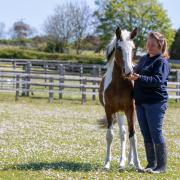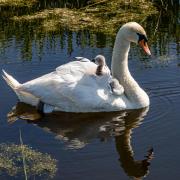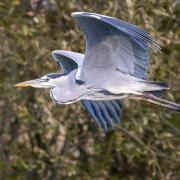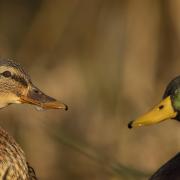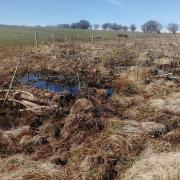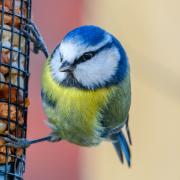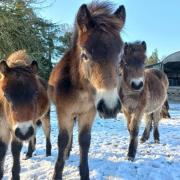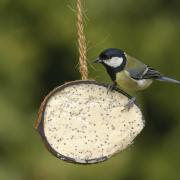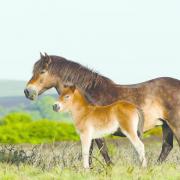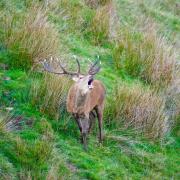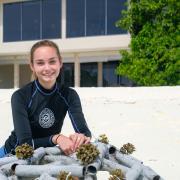Somerset and cider share the same breath, and yet more than 50% of Somerset's orchards have gone in the last 50 years. June MacFarlane talks to Neil Macdonald from West Bradley Orchards
West Bradley Orchards nestles snugly in the area of Somerset that Geoffrey of Monmouth called the ‘Isle of Apples’, near Glastonbury. West Bradley is a very special place, in a centre of Somerset cider production, and one of only two orchards left in the county that produce dessert-grade fruit.
It has been an orchard for many generations, predominantly a cider-making orchard, and was bought by Edward and Sally Clifton-Brown 20 years ago as a retirement project – quite an undertaking.
Orchards used to be an essential part of keeping your staff fit and healthy, by providing them with a drinkable alternative to the very unsafe water supply of bygone days. Without cider you would have found it difficult to employ and keep good staff and each community made its own cider from its own site-specific varieties of apple. The local Baltonsborough variety is Dunkerton’s Late Sweet, developed by Bill Dunkerton, who passed away only in 2009. It is one of the traditional varieties of cider apple that goes into quality cider.
West Bradley Orchards is also the home of The Orchard Pig, makers of award-winning apple juices and ciders. The orchards and fruit production are managed by Neil Macdonald. Neil’s background is rooted in Somerset agriculture, but his passion is for orchards and the heritage of the landscape.
“People are often very surprised when I tell them that you can prune out up to 25% of fruiting wood on an annual basis"
When you look around an orchard at this time of year and it’s just bare wood and no leaves it can seem very bleak, but if you look more closely the buds are all formed and you can tell this early in the season just what sort of a fruit crop you are going to get – if all goes well! So it’s a very good time of year to be pruning and shaping your trees into the future growth that you want them to develop.
Neil says, “People are often very surprised when I tell them that you can prune out up to 25% of fruiting wood on an annual basis. Fruiting wood is the wood that is producing fruit buds and you can see it very clearly now. It’s any wood on the tree that has buds. If there’s dead wood in the tree, wood with no buds on it, that doesn’t count towards your 25% – you can cut that out for free. The key thing is to try to get the maximum amount of pruning done with the minimum amount of cuts. The biggest mistake people make is not being brave enough – you’ve got to be brave!”
Pruning aids the regeneration of the tree; it will keep the tree vigorous and growing and alive. Neil adds, “If you think about the root system of the tree as the power supply, you want that energy to go where it is most useful – into making new growth and healthy fruit, not into maintaining old wood.”
Pruning opens out the tree so that light can get into it, producing lots of leaf growth for blossom and fruit. “If you can imagine your tree in full leaf you can start to see that some of the branches will be completely in the dark, so they will not produce any growth. Remove those branches and take them right back to the trunk. Then the energy from the roots will go straight up the trunk and feather out into the fruit-bearing branches,” explains Neil. However, he warns, “If you try to remove more than 25% of the whole of the tree then it will try to expel some of the excess energy and put out lots of little growth shoots, which are no use for making fruit and you will have overdone it.”
Most pruning is done with a saw, not a pair of secateurs. If you are using secateurs you are not being brave enough! According to Neil a little hand-saw will be fine. “Where you place the cut is important. If you look at the trunk of the tree and where the branch starts to come out of the tree you will see a little bit of a rippling effect where it joins the trunk – that is repairing scar tissue. What you need to do is cut on the branch side as close to the ripple as you can and cut the branch off cleanly there. What will happen is that the scar tissue will fold around the scar and will seal that joint off. If you cut too far up the branch the scar tissue can’t wrap around the cut and the branch will die back into the centre of the tree, which is how you get hollowed trees.”
There’s absolutely no need to put anything on the cut: just like us, the tree will heal itself if the cut is made in the right place.
“Do not be tempted to cut a branch halfway along – that’s a real ‘no no’ in apples. The branch will die back and hollow out the tree. If you absolutely have no choice, cut the branch at a joint, where the sap will continue to rise up so the energy continues to feather out into the tips of the tree.”
Neil makes the point over and over that a well-managed orchard not only produces better fruit, it also encourages biodiversity by as much as ten times the amount of an ordinary field. “The biodiversity of a neglected orchard is much, much less than in a managed orchard. The idea that conservation is a case of ‘leave it to go wild’ is just not true. We’ve been grooming our countryside for generations and we need to continue to do that for the best balance of our wildlife.”
To this end, Orchard Ground Force – part of The Orchard Pig – has been asked by the National Trust to assist them in their Orchard Project. The Conserving and Restoring Traditional Orchards in England Project, to give it its full title, is managed by the National Trust, with half of the funding coming from Natural England’s Countdown 2010 Fund. Its aim is to encourage the restoration of traditional English orchards, particularly those at National Trust properties, thereby rekindling the enthusiasm of the public for orchards and the habitat they provide for wildlife.
Thirty National Trust properties and 15 partner organisations, such as local authorities, Wildlife Trusts and community groups across England, are participating. National Trust properties in Somerset include Barrington Court, Montacute House and Lytes Cary.
In addition to practical restoration work, wildlife surveys and public events to raise awareness, the project includes a series of orchard management workshops and Orchard Ground Force will be leading these for the South West. Kate Merry, who is co-ordinating the project for the National Trust, says, “Traditional orchards were recognised in 2007 as a priority habitat for wildlife, under the UK Biodiversity Action Plan. They also attract payments under Higher Level Stewardship agreements, all of which opens the door for grant allocations.”
“We have been very fortunate,” says Neil, “that Orchard Ground Force and the National Trust both have very similar views and we are running parallel with them on what we are trying to do, namely the restoration and salvation of these orchards in order to produce good fruit for practical use.”
Neil Macdonald can be contacted at: www.orchardpig.co.uk, 01458 851222
The National Trust Orchard Project is at: www.nationaltrust.org.uk, e-mail orchards@nationaltrust.org.uk





